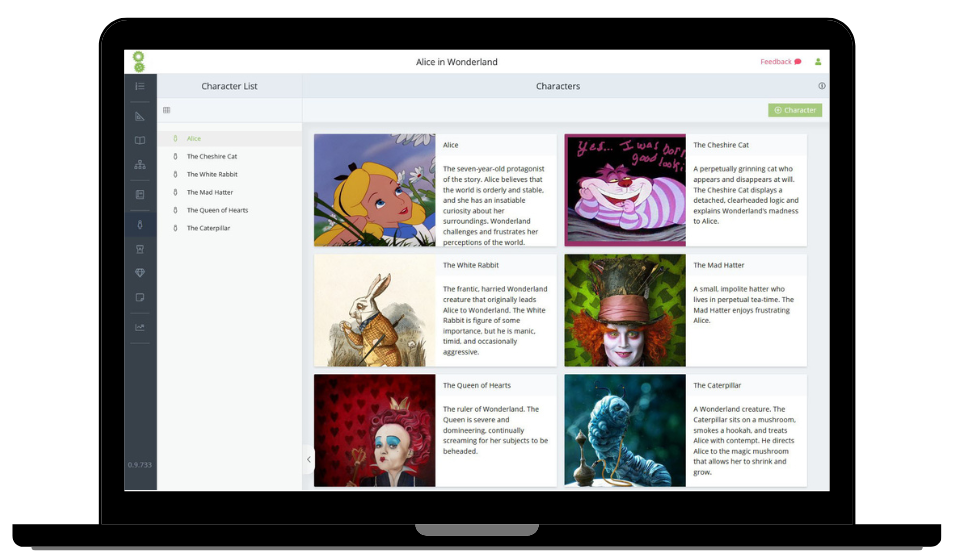
How to Write a Romance Novel
Guest post by Millie Dinsdale
Are you considering writing a romance novel? You might be wondering where to start.
Romance novels are incredibly popular and while they might seem easy to write, there’s a lot of nuance that goes into creating an effective and reader-friendly love story.
In this article, I’ll outline eight steps for writing romance novels. Let’s dive in!
What is a Romance Novel?
Before we start, let’s define what makes a ‘romance novel’ in the first place.
Romance novels started as a way for female writers to express their desire to break from convention or to overcome internal struggles. Nowadays, most people can agree the only defining characteristic of a modern romance novel is ‘love.’
That’s it! The only constraint for writing a romance novel is that it must include romantic love.
Of course, including romantic love in your writing sounds much simpler than it is.
How do you choose what type of love story to write about and how do you write about it in a way that feels realistic and engaging? How do you write a novel that stands out from the masses of other romances?
How do you write a novel that could potentially sell a million copies and make you a multi-millionaire, allowing you to buy that dream mansion with the pool and the bowling alley, and rub it in the face of that classmate who said you’d never be successful?
This article will be able to help you with the first two, maybe not the third one. For that you might want to return to the wonderful world of imagination.
8 Best Practices for Writing Romance Novels
1. Choose Your Subgenre
The first step in the romance novel writing process is easy: choose your subgenre.
Subgenre can affect every aspect of your story: when and where it is set, who your target audience is, what the main topics will be and how it will end.
Here are a few popular romance sub-genres:
- Young adult
- Historical
- Fantasy
- Gothic
- Contemporary
- Romantic suspense
- Erotic
- Religious romance
To choose a sub-genre you need to understand what each entails. To do that, you need to read.
By reading authors in your chosen sub-genre, you’ll better understand the required conventions readers in that space expect. The more you’re able to fit into those conventions, the more likely readers will engage with your writing.
If you’re not sure which sub-genre fits best, step out of your comfort zone, read authors you aren’t familiar with, and take book recommendations from friends. Once you find a style you enjoy, delve deeper into that subgenre to ensure it matches your personal style.
2. Pick a Plot Device
After choosing a subgenre, decide on the basic plot for your story. Romance novels typically use common plot devices to kick the story off.
A few common romance plot devices are:
- Friends who realize they were in love all along
- Love at first sight
- A traumatized character finally finds love
- A couple who overcome every obstacle to be together
When writing romance, you don’t need to reinvent the wheel. After all, there’s a reason you can find hundreds of stories that follow these plots — they’re popular. Once you’ve settled on the basic premise of your story, it’s time to start writing.
3. Set the Stage
Setting is important for every novel, but especially so for romance novels. Your rich and mysterious heroine won’t feel realistic if she lives in a small town in Ohio, but she will if she lives on the top floor of a skyscraper. Choose a setting that works for the characteristics of your main characters.
When it comes to setting up your specific scenes, consider choosing a few cleverly designed ‘meeting places’ rather than overloading your reader with pages of descriptions for brand new settings every time they reach a new chapter.
Look to the TV show Friends for an example. Whole episodes of this wildly popular series were set in a 1,300 square foot apartment.
Pick a few important locations, such as a subway station, a lecture hall, or a local café to position most of your character interactions. Slimming down your settings allows your characters to take center stage, which is important for romance novels.
It can be helpful to draft a map of your fictional world so you know where each place is in relation to the others. It doesn’t have to be as complex as a fantasy masterpiece like A Song of Ice and Fire, just enough to help you picture your fictional world.
Create a world that your readers will want to return to again and again.
4. Write a Compelling Main Couple

Writing a likeable, yet believable, main couple is much easier said than done. It’s far too easy to fall into well-known tropes, leading to two dimensional characters and stories that fall flat. Here are a few things that you can do to avoid this pitfall:
Include Believable Backstories
If your main character avoids all relationships, give them a tragic backstory full of betrayal and heartbreak. If your main character is scared of commitment, delve into their childhood where they went through a parental divorce.
Establish Character Flaws
A perfect character is a boring one. Flaws can make characters more believable and give them an opportunity to grow. Allowing one character to help another overcome a flaw, such as being scared to follow a dream, can be a great way to create meaningful connections and the basis of a relationship.
Take Your Time
It is only Shakespeare’s genius that allows readers to ignore the fact that Romeo and Juliet fell in love in two days. Don’t be scared to hold off on the romance to give you more time to develop the tension.
Create Conflict
Boy meets girl. Their lives combine perfectly and they get married and live happily ever after. Boring, right? That’s because this story is missing conflict. Nothing in real life is perfect, so it shouldn’t be in your book either.
Your main couple is key to compelling readers — spend time developing their story.
5. Mind the Tropes
And that brings to romance tropes. Romance tropes can make, or break, a story.
Well-done tropes can encourage people to purchase your book, because they are already familiar with and know that they like the trope.
Or they can discourage people from buying your book, because they are bored of the trope or already know that they do not like it.
The key to avoiding trope fatigue is to put an interesting spin on your story. Reverse the typical couple roles or set them in a unique place. Adding something unique to your story will help you reap the benefits of trope-laden writing, without forcing your readers to roll their eyes.
6. Develop Sex Scenes Mindfully
Although an excess of sex scenes can work amazingly for some novels (E.L. James, for example), it is not the standard. If you are thinking about adding a sex scene to your romance novel, ask yourself these questions:
- Does the scene develop the main couple’s relationship?
- Does the scene spark an important conversation that could not happen elsewhere?
- Does the scene help the story to progress?
- Would it feel wrong if the scene was not included?
If you cannot answer yes to at least one of these questions, then it might be time to step away. Unnecessary sex scenes can make novels feel clunky and awkward, and alienate audiences who either don’t like this type of content or who are too young to read it.
7. Don’t Neglect Secondary Characters
The meddling boss. The protective best friend. The worst enemy. The overbearing mother. The supportive teacher. The skeptical child. The nosey neighbor.
Secondary characters fill out your fictional world. They should be interesting and have lives of their own. Just don’t make them too interesting so when your main character finally breaks out of the love triangle, your reader is left wishing it went the other way.
Secondary characters can be used to pad out your central character’s personalities. Children can incite positive growth in their parents, best friends can point out flaws in characters and help them overcome them, and teachers can help characters develop the tools they need to follow their dreams.
Another reason to pay attention to your secondary characters is because they could be used to write a sequel. Your main character’s best friend could move to New York and start on a turbulent romance journey of their own.
8. Write a Happy Ending

For every one romance novel with a sad ending, there are 20 with a happy one. Even then, the majority of the sad romance novels aren’t really ‘sad’ in the traditional sense.
Take Me Before You by Jojo Moyes, for instance. Not to include spoilers, but there definitely isn’t a happily ever after in this story.
Romance readers typically love a happy ending — even if happy has some bits of sad also stuck in there. More than anything, your romance readers want confirmation at the end of the novel that the main couple’s love was true, even if circumstances conspire to separate them.
If you plan on writing a sequel, you can leave your readers with the promise of a happy ending. If this is a solo novel, ensure the beauty of that love story stands the test of time. Your readers will thank you — and be more likely to pick up your next book!
The World Needs More Romance Novels: Write Yours
There you have it! Eight simple steps to crafting a romance novel your readers will love. The only thing that’s left is to get writing — which you should! The world needs more romance novels.
Millie Dinsdale is ProWritingAid’s content assistant. As an English literature graduate, her reading list is taller than her bookshelf. When she isn’t reading, editing, or writing, Millie loves buying more plants for her overfull windowsill and walking her two miniature schnauzers.
Unlock your writing potential
If you liked this article by the Novel Factory, then why not try the Novel Factory app for writers?
It includes:
- Plot Templates
- Character Questionnaires
- Writing Guides
- Drag & Drop Plotting Tools
- World Building resources
- Much, much more

